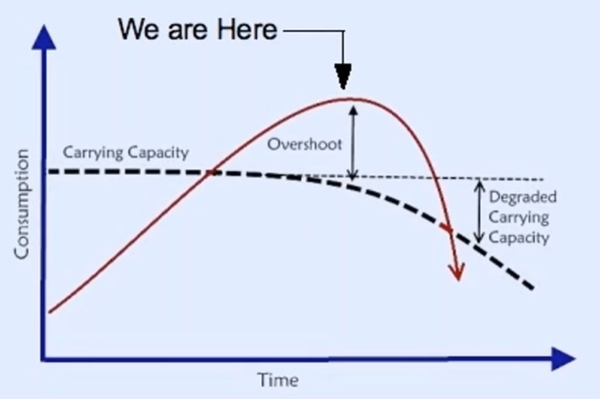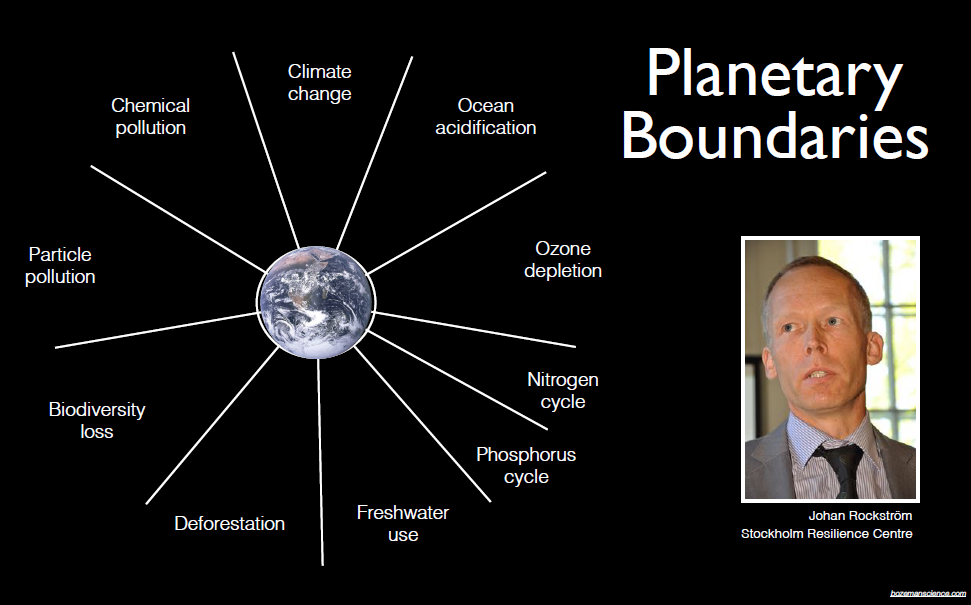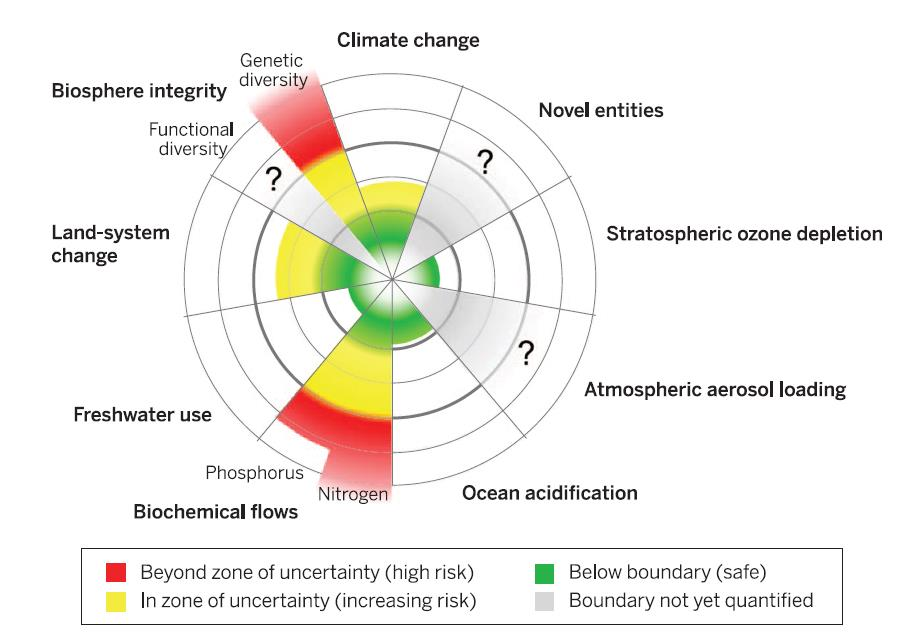Planetary Boundaries
Revised 2 December 2023
Our planet Earth has a carrying capacity which supports myriads of life forms in various ecosystems, including that of humans. The survival of humans depends on the survival of ecosystems and the life forms supported by those ecosystems. If we overshoot the carrying capacity of our ecosystems, then that carrying capacity degrades. Earth would no longer be able to support the same number of life forms, including that of humans.

Figure 1: Overshooting Earth’s Carrying Capacity
Johan Rockström and colleagues (2009) identified 10 planetary boundaries which must not be exceeded in order to ensure a sustainable future for life on Earth. These boundaries are interlinked, and crossing certain biophysical thresholds can only but have disastrous consequences for humans and other life forms. Human activity has the potential to overshoot the threshold of all these planetary boundaries. Climate change is but only one of many boundaries of overshoot. Other planetary boundaries include ocean acidification, ozone depletion, the nitrogen cycle, the phosphorous cycle, freshwater use, deforestation, biodiversity loss, particle pollution, and chemical pollution.
.

Figure 2: Planetary Boundaries (Rockström et al. 2009)
In 2015, Will Steffen and colleagues identified the extent that planetary boundaries are at risk. In Figure 7, the zones of planetary boundaries which are safe are coloured green, those subject to uncertain but increasing risk are coloured yellow, and those subject to high risk beyond uncertainty are coloured red. The safe thresholds of three of the planetary boundaries – genetic diversity, flows of phosphorous, and flows of nitrogen – have already been well exceeded. A critical boundary is phosphorous which is essential as a nutrient for all life forms. Climate change is in a zone of uncertain increasing risk. Continued climate change will exacerbate the overshoot of several other planetary boundaries.

Figure 3: Planetary Boundaries Zones of Risk (Steffen et al. 2015)
Mathis Wackernagel and colleagues (2021) researched the ecological footprint of humans and estimated that in 2020, the demand of humans on biological resources exceeded the amount that Earth’s ecosystems produce by at least 56%. Moderate business-as-usual can only but further exceed our demands on biological resources. We need to rapidly reduce our demands. To do otherwise will result in degradation of the carrying capacity of biological resources upon which we rely on for our survival.
We need to avoid overshooting the carrying capacity of our planet Earth. Climate change is but only one of many boundaries of overshoot. We have already exceeded the safe thresholds of three planetary boundaries. Our ecological footprint exceeds what Earth can safely provide by over 50%. We need to reduce our demands on biological resources.